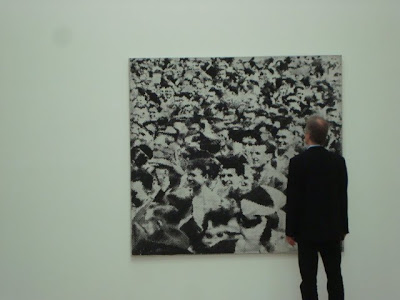
I recently went to the Kunst Museum Bonn in Germany that is full of modern art. The strangest thing I encountered there was a mannequin in a suit with a ventriloquist doll sitting on his shoulder and talking. Welcome to the world of modern art!


The current exhibition is Ferne Nähe. This exhibition is about the remote proximity of nature in contemporary art. I liked the dark room with the video of a lady playing an instrument on the side of the mountain. I was surprised to see a large pile of fish tanks full of moss, with water running through them as a piece of art. Earlier that week I saw on the German shopping network a weird invention that easily removes the moss from in between the cobble stones around your house without hurting your back. I live on the west coast in the USA, so I hardly think about moss, but to Germans it must a familiar part of daily life...a nuisance as well as something so appreciated that it is turned into a large artistic sculpture.

Something else really interesting was a machine that spelled words as water drops fell from it.

There was also a large collection of paintings that included the two below. The still life is August Macke, a local Rhein artist.

I don't remember the name of the disturbed person who painted this, but it reminds me of the Mexican Day of the Dead celebration, even though it was a German artist. I love the bright colors, who says that death has to be black?

I snapped a picture of the security guard looking at this work of art.

Even the building architecture was interesting and beautiful. Art is very inspirational and can feed the soul. I'm glad I went to this art gallery, even though my guy refused to walk through the door with me (he spent the day eating and walking around outside instead). At least I can become more cultured.

Tip of the day: Find a local art gallery where you live to visit. Even if you don't like the style of art, say Modern German (I'm not really a fan), you will still walk away more cultured, and something might even inspire you.



























